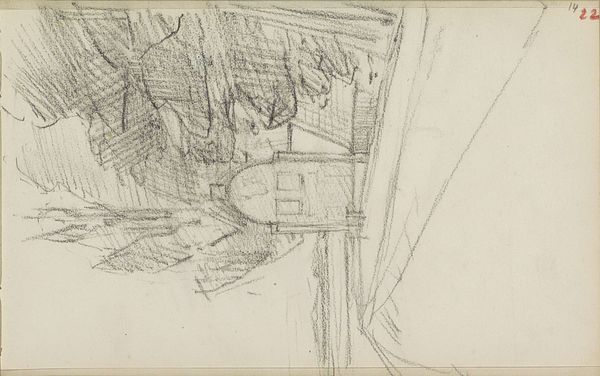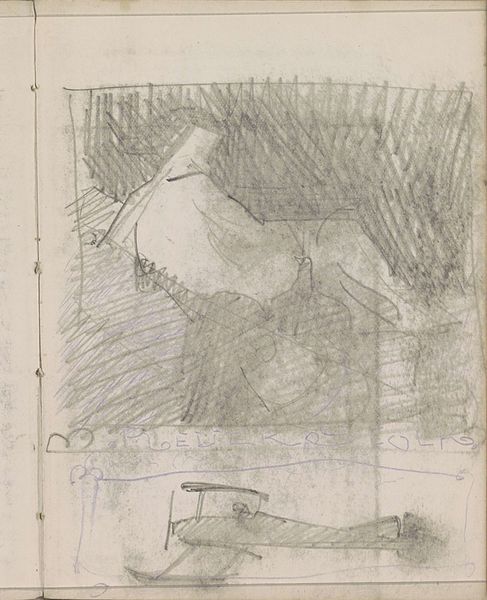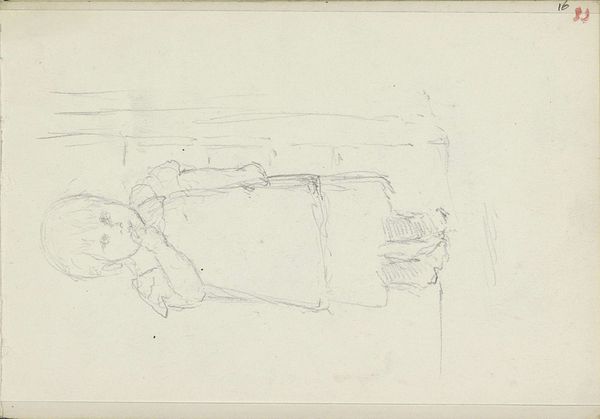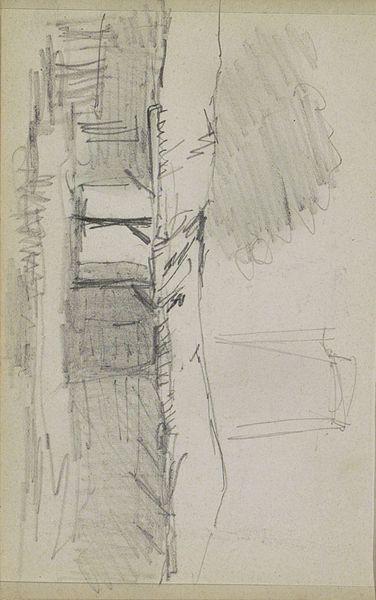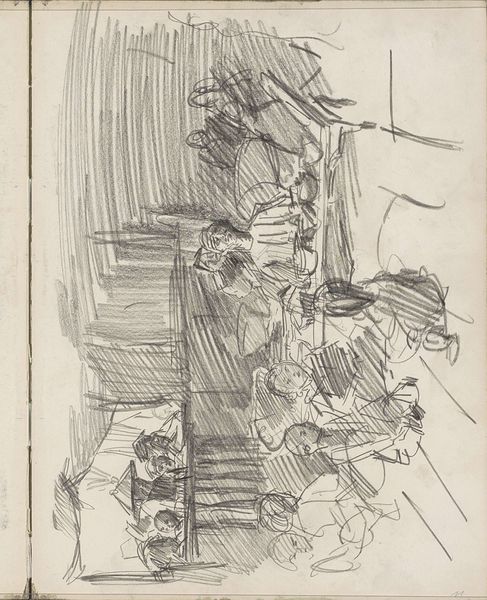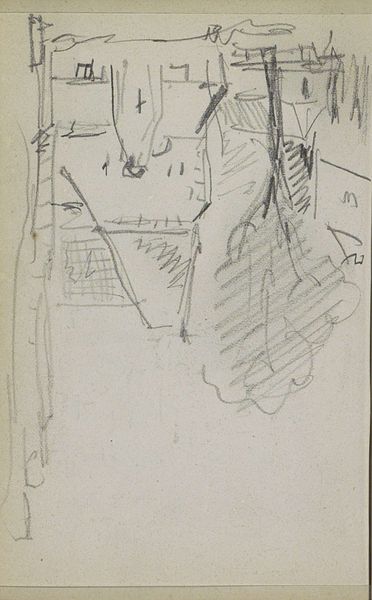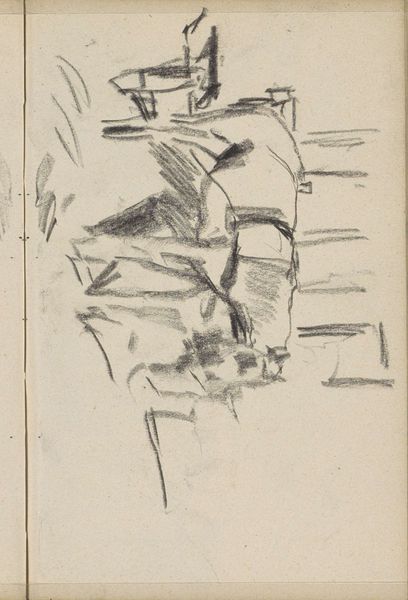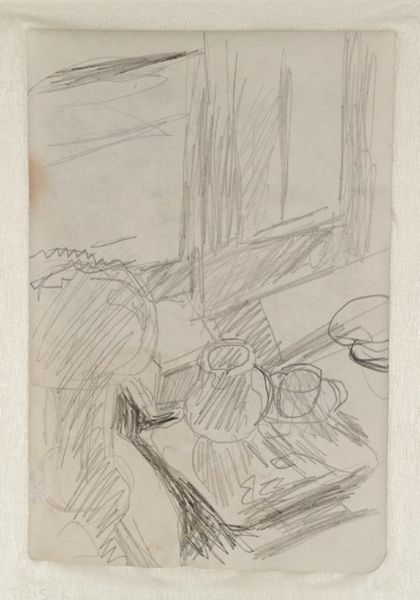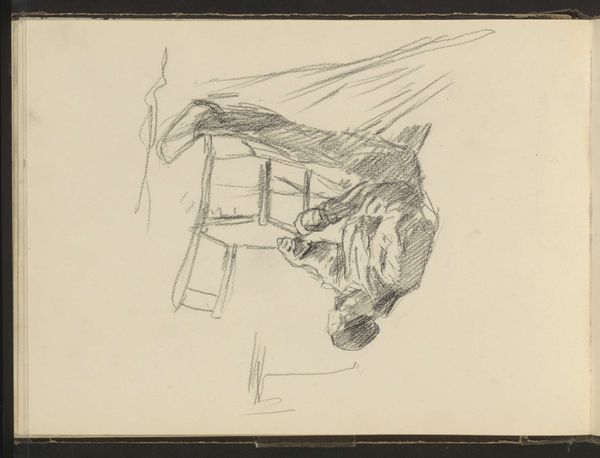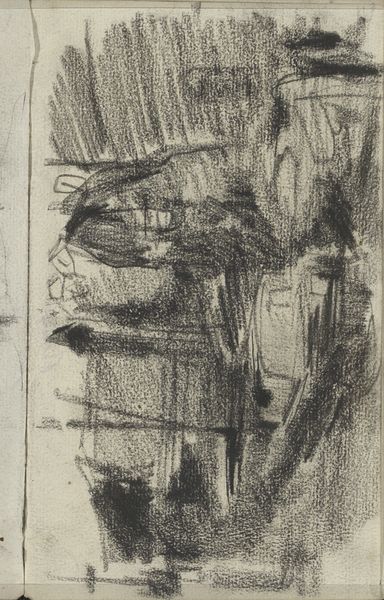
Copyright: Rijks Museum: Open Domain
Curator: What a seemingly simple, yet captivating sketch! This is "Trees along the water, possibly a canal", an undated pencil drawing by Isaac Israels, created sometime between 1886 and 1903. It resides here at the Rijksmuseum. Editor: It feels almost melancholic. The heavy strokes of the pencil, the implied reflection... the water appears dark, almost viscous. Curator: Yes, the composition uses vertical lines to suggest the height of the trees, contrasted by the horizontal lines implying the stillness of the canal, perhaps capturing a liminal state. The density of the pencil work above the waterline and the sketchy lightness below imply two distinct visual spaces. Editor: This "stillness," if we can call it that, reflects the stagnant social realities of that time. Canals, while functional, were also breeding grounds for disease. Is Israels perhaps hinting at the unseen and unspeakable aspects of urban life, using the reflection as a metaphor for the repressed anxieties of the period? Curator: That's a very evocative interpretation. One could also simply consider his skillful use of line and shading to create depth and texture. Note how, with such simple means, Israels suggests foliage and water texture, leading the eye to move vertically through the composition. The blank space in the upper left gives balance, creating an asymmetrical harmony. Editor: But consider the context. The late 19th century saw the rise of industrial capitalism, mass urbanization and extreme inequalities in social spaces, and artists are deeply invested in these realities, or struggling to evade them. Even a “simple” landscape carries this tension. Curator: Ultimately, it is the tension between observation and technique that elevates this drawing. Editor: Precisely. And it's within this tension, between what is seen and what is felt, that art can truly speak. Curator: A poignant reflection, fitting for such a contemplative work. Editor: Indeed, it prompts us to question the world both within and without.
Comments
No comments
Be the first to comment and join the conversation on the ultimate creative platform.

